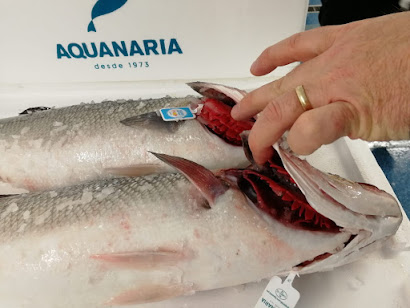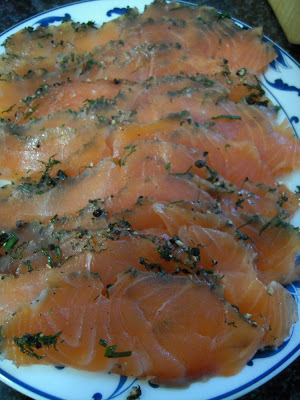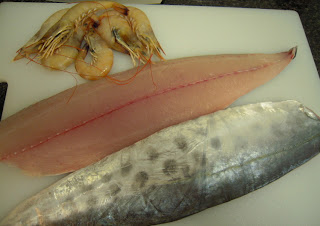Ever wondered about the procedures undertaken to preserve the highest quality seafood that ends up onto your plate? Or have you ever considered how it is possible to buy good quality fish from other continents? Much research time and money is spent on finding the best way to preserve food especially fish being as it is the fastest degrading of them all. Various methods of preservation can reduce the spoilage processes of freshly caught fish and shellfish. The initial stages of processing are highly important when trying to maintain important qualities such as freshness, taste, aesthetic values, and edibility of fish. The lowering of quality in any of these areas will cause degradation amounting to the de-valuing of the product when offered to markets or for public consumption.
The two main causes of spoilage in fish are from the self-digestion of tissues, created by enzymes and the bacterial breakdown of the flesh. Immediately after death the fish will start to experience the stiffening of body muscles, this is known as rigor mortis, and if handled incorrectly when being processed the tearing of muscles can occur. The speed of onset is dictated by storing temperatures and glucose contents of the red muscle. This condition can last between one and five days before it starts to wear off.
The micro organisms that can be found on fish will undoubtedly effect the eating quality and the abundance will vary with their chosen environment, the biological state, impacts of nutrition and the effect of the actual catching the fish and these factors are commonly found to be species specific. The biological cycle and nutritional status significantly affect the lipid content and enzyme activity in fishes. Small sized species such as sprat, caplin, and anchovies have a high abundance of hydrolytic enzymes if they have been feeding well. This results in the rapid quality degradation caused by autolysis, resulting in the bursting of the belly.
Although these processes reduce the quality of the fish, the main cause of spoilage is the bacterial load. The presence of bacteria in the muscle areas and bodily fluids of a freshly caught fish is minimal, but areas such as the gut, gills, and slime do contain larger quantities. The regulatory mechanisms that prevent bacteria from invading the tissues cease to function immediately after death. The bacteria will then attack the fishes flesh, travelling from the gills and kidney using the vascular system as their main route. The main groups of bacteria located include Pseudomanas, Achromobacters, and Flavobactors. It has been found that trawled fish contain between 10-100 times more of these due to the dragging through the seabed substrate that contains large amounts of bacteria. High temperatures coincide with peak bacterial quantities; seasonal variations also have a role as some species of plankton have antibiotic effects on the populations of bacteria.
Initial preservation techniques
Washing and gutting
Washing with clean water is thought to reduce the bacterial content of a freshly killed fish by 80 to 90%. Fish pick up large amounts of bacteria when coming into contact with decks and holds plus the time spent in the sun whilst waiting for processing to commence. Sometimes these actions are unavoidable; therefore, the exposure times to the fish must be reduced to the lowest possible levels. Some experts suggest that the gutting of fish does not reduce the bacterial decomposition, but does slow the digestion of the body cavity walls. The gut area contains large amounts of bacteria therefore fish coming into contact with any removed innards will increase their own overall bacterial loads.
Bleeding
Whilst fish are being stored residues of blood contained in the fillets may undergo oxidation to brown methemoglobin and can catalyse lipid oxidation. Therefore, to preserve the ideal colour of white flesh before chilling, effective bleeding techniques should take place.
Icing
After the discussed processes have taken place, the fish can then be stored on ice. The quality preserving effect of ice on fish is due to the reducing in speeds of undesirable biochemical and chemical reactions, plus the retardation of the spoilage activity of micro-organisms. The temperature and distribution of the ice and the size of the fish are the determining factors of chilling speeds; therefore, ice can have a high cooling capacity if distributed efficiently. Increased storage life gained from chilling varies dramatically with the species of fish. Small fatty fish have an increased life of 5-8 days, lean white fish caught in cold waters can be stored for up to 14 days and species such as mullet and breams from tropical fisheries last for 30 days. Shovels used for the moving of crushed ice tend to transfer bacteria due to initial exposure to the fish. Regular changing of ice and cleaning of holds along with the use of clean shovels are important to reduce this effect. One benefit of icing fish is the added washing capabilities it creates when melting, therefore areas storing the iced fish must have adequate drainage as resting water holds large quantities of bacteria. Common ratios of ice to fish are 1kg to 3kg respectively, with an increase of ice for longer storage periods. Various types of ice are in use with flake ice being the most popular. This type is around 1-2 cm in length and 0.5cm in thickness and has a very intermit contact with the fish. This is important as damage will decrease the value of the product and increase the spoilage rate.
Refrigerated water
Some vessels, especially those working in the pelagic industry, will use refrigerated water as a fish storage method as this causes less damage to the product and cleans them in the process. The bacteria will stay in the water so there is a need for regular change to avoid contamination. The spoilage rate is initially lower than iced fish but after 4-5 days it starts to accelerate then begins to spoil faster. It is not viable to keep all species in water as some absorb salts via osmosis or to much water and liquefy. The temperature of the water needs to be close to freezing, as spoilage rates are much lower at –2oc than they are at 0oc.
Freezing
Many boats have the capability to freeze fish aboard, and this can increase the shelf life of fish by up to 18 months. The modern fishing trade apply frozen storage temperatures of around –30oc to as low as –60oc, and as the most resistant micro-organisms become inactive at –12oc these temperatures are efficient at controlling the rate of spoilage. As bacterial growth stops at commercial freezing temperatures it is suggested that the quality of frozen stored fish depend on the following factors:
- Temperature and time of storage
- Rates of freezing
- Initial quality of seafood, sometimes determined by species.
- Preparation before freezing leading to freshness.
- Reliability of protection against desiccation and oxidation.
- Effectiveness of the protection against detrimental protein changes.
After the consideration of these factors the most efficient method of freezing can now be selected. The three commonly used methods include the blowing of cold air, direct contact between a refrigerated surface and the fish or the immersion or spraying of a refrigerated liquid.
The use of air
Convection or air blast freezers are the most common methods found in the fishing industry. These systems use fans to force a convection of air around a chamber where the fish are standing. The flow rate of the air needs to be reasonably high with a constant uniform stream at all times, therefore a compromise between this and slow freezing rates need to be applied. Approximately 5m/s is close to the compromise required. A major advantage with air blast freezers is the versatility of being able to store fish of various shapes and sizes, although uneven freezing can be common and sometimes a dry product is the result.
Contact freezing
Another frequently used method is contact or plate freezing. These systems do not have the same versatility as air blast freezers because they only have the capability to freeze regular shaped blocks or packages. Horizontal and vertical variations are in use; both constructed from aluminium alloy plates and driven by hydraulics systems.
Horizontal plates
Horizontal plate freezers have two main uses:
The freezing of pre-packed boxes of fish or related products.
Forming consistent rectangular blocks, commonly known as laminated blocks, for the preparation of fish portions. The thickness of the block should fall between 32mm and 100mm, but the machine will only function correctly if the top and bottom surfaces make good contact.
Vertical plates
The main advantage with vertical plate freezers is that the extra packaging or arrangement of trays is unnecessary therefore bulk freezing can be employed with blocks approximately 1070mm x 535mm in size. The weight of the block is the only point restricting large scale freezing, as the physical capability of the user to remove it becomes too large. The majority of species will produce their own compact block; therefore, they can be loaded between the plates without the need of water. Some soft fatty fish do require the addition of water to fill the unwanted holes; the benefits of adding water include:
Strengthening of the block.
Protection of the fish during handling.
Can reduce the effect of dehydration and oxidation.
Salt solution
The uses of sodium chloride or calcium chloride brine solutions allow temperatures to decrease to –15oc before freezing starts. This creates a fast freeze resulting in a good quality, natural looking product although water drawn from the fish via osmosis can cause weight loss and a very salty flavour. It is usual for only large tough skinned species such as tuna, which end up canned (salt added in process), being frozen with this method. The system is cheap to set up but the maintenance can be costly due to the corrosive nature of salt.
Liquid gas
Liquid gas is the most recent form of refrigerant tried, but due to the costs, it is only viable to freeze high value species. Gases such as freon, carbon dioxide or nitrogen can be used all providing extremely fast freezing times, essential for gaining a good final product. There are many advantages to liquid gas freezing, which include: -
- Quick and efficient freezing
- Low maintenance
- No need for compressors, condensers or coolers
- Size of the unit is relatively small
- Power required for operation is low
The main disadvantage of this method is expense, as it can be up to four times more costly than air blast freezers. Figure five shows the simple set up of a liquid nitrogen freezer, capable of working to temperatures as low as –196oc.
Drying and salting
The drying of fish by means of the sun was probably the first method used for preserving seafood. The risk of microbial spoilage is reduced at high rates of drying due to the decrease in water activity by the removal of water. The level of humidity in the atmosphere dictates the spoilage rate of dried fish and a level of less than 10-14% seems adequate for good preservation
The application of salt before drying helps to accelerate the water removing process. The lighter the salting, the less preservation is given to the product, as water contents will still be high. The types of salt used are very important as large quantities of trace elements can cause detrimental effects to the aesthetic value and taste. Better quality fish products are usually white in colour; therefore, large amounts of copper in the salt will lead to an unwanted brown or grey coloration. Although calcium and magnesium produce a white product the levels of these elements cannot exceed 0.5% as a bitter taste and brittle product will be the outcome. Bleeding of the fish is essential, as any residues of blood left in the fillet will cause discolouring to the final product. The grain size also needs consideration as fine grades have a tendency to block the drainage holes in the salting vats, causing a build up of bacteria. Over several months, at room temperature, the shelf life of dried salty products can be affected by the following factors: -
- Humidity and temperature of the environment
- Salt concentration
- Presence of preservatives
- Water quality
- Infestation of insects and vermin
All of these factors create spoilage problems, but insects cause the majority of losses in dried fish, during storage. The oily species of fish do not preserve well in this fashion, as the oil tends to go rancid. Pickle curing is the chosen method and the fish can be treated whole, gutted, either with or without the head. If the guts of the fish are removed, the pyloric caeca is left as the enzymes it contains give the mature flavouring. The fish are salted in the same way as lean white fish, but they remain in a brine solution instead of being dried. The life span of this product, depending on contact with air, is around one year
Marinades
Marinating is a form of preserving by the use of both salt and acetic acid. The shelf life of the product is limited by the concentration of acid, but high levels need to be avoided due to the ability of stomaching by humans. Herring and anchovy are preferred species and bivalve molluscs are also common, but these are cooked before being they are treated.
The fish are filleted then washed in a 5-10% salt solution before treatment, this removes blood and scales as well as adding flavour and drawing water from the flesh. The concentrations of acid and salt are affected by the simple use of a lid. An open vat contains approximately 4% acid and 10% salt increasing to 7% and 14% respectively if the vat is sealed. If the concentration is high, fish tend to float giving uneven absorption and unneeded spoilage. Sugar can be added to reduce the bitter taste of the acid. The absorption rate is temperature dependent, but commonly the fish stay in the vat for approximately three weeks at 3oc. After this period the fish are removed and jarred, with the addition of a weaker brine solution around 1-2: 1. Additives such as peppers or peppercorns are included to increase the appeal.
As discussed there are many preserving and processing methods available to control the spoilage rates of fresh fish. The methods vary from high cost liquid cryogenic freezers to cheap and effective greenhouse dryers, thus allowing the whole world the opportunity to enjoy many variations of fish products. With the increased technology of freezing methods it is possible that the consumers will move away from flavoured, preserved, chemically contaminated fish back to the initial product removed from the sea.





































